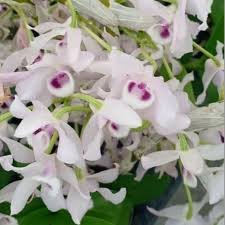### How to Detect Nutrient Deficiencies in Phalaenopsis Orchids

Phalaenopsis orchids, commonly known as moth orchids, are a popular choice among both novice and experienced growers due to their stunning blooms and relatively easy care requirements. However, to thrive, these plants need the right balance of nutrients. Nutrient deficiencies can lead to various growth issues, affecting their health and flowering potential. Understanding how to detect these deficiencies is essential for any orchid enthusiast. This article will explore the signs of nutrient deficiencies in Phalaenopsis orchids, the nutrients they need, and how to remedy these deficiencies effectively.
#### Understanding Orchid Nutritional Needs
Before delving into the signs of nutrient deficiencies, it’s crucial to understand what nutrients Phalaenopsis orchids require for optimal growth. Orchids need a balanced mix of macronutrients and micronutrients.
1. **Macronutrients**:
– **Nitrogen (N)**: Essential for leaf growth and overall plant health.
– **Phosphorus (P)**: Important for root development and flower production.
– **Potassium (K)**: Supports overall plant health, improving resistance to disease and enhancing flowering.
2. **Secondary Nutrients**:
– **Calcium (Ca)**: Vital for cell wall structure and growth.
– **Magnesium (Mg)**: A component of chlorophyll, important for photosynthesis.
– **Sulfur (S)**: Essential for protein synthesis and enzyme function.
3. **Micronutrients**:
– **Iron (Fe)**: Critical for chlorophyll formation and enzyme activity.
– **Manganese (Mn)**: Important for photosynthesis and nitrogen metabolism.
– **Zinc (Zn)**, **Copper (Cu)**, **Boron (B)**, and **Molybdenum (Mo)**: Necessary for various biochemical processes.
Understanding these needs can help growers identify deficiencies when they arise.
#### Signs of Nutrient Deficiencies
Recognizing the signs of nutrient deficiencies is vital for the health of Phalaenopsis orchids. Different deficiencies present distinct symptoms, making it crucial to observe your plants closely.
##### 1. **Nitrogen Deficiency**
**Symptoms**:
– **Yellowing of Older Leaves**: Older leaves may turn yellow, while new growth remains green. This is because nitrogen is mobile within the plant and is drawn from older leaves to support new growth.
– **Stunted Growth**: A nitrogen-deficient orchid may exhibit reduced leaf and flower growth.
**Remedy**:
– Apply a balanced fertilizer with a higher nitrogen ratio (e.g., 30-10-10) to promote green, healthy growth.
##### 2. **Phosphorus Deficiency**
**Symptoms**:
– **Dark Green Leaves with Purple Tint**: Leaves may become dark green, with a purplish hue, particularly along the edges.
– **Poor Flowering**: Phosphorus deficiency often results in fewer flowers or weak spikes.
**Remedy**:
– Use a fertilizer high in phosphorus (e.g., 10-30-20) to enhance root development and flowering potential.
##### 3. **Potassium Deficiency**
**Symptoms**:
– **Leaf Tips Browning**: Leaf tips may start to brown and curl, a sign that the plant is not receiving enough potassium.
– **Weak Flower Stems**: Flower spikes may be weak and prone to breaking.
**Remedy**:
– Apply a potassium-rich fertilizer (e.g., 15-15-30) to strengthen the plant and promote vigorous growth.
##### 4. **Calcium Deficiency**
**Symptoms**:
– **Soft, Deformed Leaves**: New leaves may appear soft and deformed, and older leaves may develop spots.
– **Root Issues**: Calcium deficiency can lead to poor root development.
**Remedy**:
– Introduce calcium supplements or use a fertilizer containing calcium (e.g., calcium nitrate) to promote strong growth.
##### 5. **Magnesium Deficiency**
**Symptoms**:
– **Interveinal Chlorosis**: Leaves may exhibit yellowing between the veins while the veins remain green, a classic symptom of magnesium deficiency.
– **Leaf Drop**: Severe magnesium deficiency can lead to premature leaf drop.
**Remedy**:
– Apply a magnesium supplement or a fertilizer with magnesium (e.g., Epsom salt) to restore balance.
##### 6. **Iron Deficiency**
**Symptoms**:
– **Chlorosis of Young Leaves**: Young leaves turn yellow while the veins remain green, indicating a lack of iron.
– **Reduced Growth**: Overall growth may be stunted, and new leaves may be smaller.
**Remedy**:
– Use chelated iron supplements or a fertilizer containing iron to correct this deficiency.
##### 7. **Manganese Deficiency**
**Symptoms**:
– **Mottled Leaves**: Leaves may develop a mottled appearance, with yellowish spots or patches.
– **Growth Issues**: Affected plants may experience slow growth and reduced flowering.
**Remedy**:
– Apply a manganese-containing fertilizer to support healthy growth.
##### 8. **Zinc Deficiency**
**Symptoms**:
– **Leaf Distortion**: Young leaves may appear distorted or crinkled.
– **Reduced Growth**: Overall plant growth may be stunted.
**Remedy**:
– Introduce a zinc supplement or use a fertilizer high in zinc content to alleviate this deficiency.
##### 9. **Boron Deficiency**
**Symptoms**:
– **Poor Flowering**: Lack of boron can lead to reduced flower production and weak spikes.
– **Leaf Deformities**: Leaves may exhibit abnormal growth patterns.
**Remedy**:
– Use boron-containing fertilizers to support healthy flowering and growth.
##### 10. **Copper Deficiency**
**Symptoms**:
– **Stunted Growth**: Young growth may be stunted or die back.
– **Leaf Discoloration**: Leaves may exhibit a blue-green hue.
**Remedy**:
– Apply copper-based fertilizers to restore health.
##### 11. **Molybdenum Deficiency**
**Symptoms**:
– **Yellowing of Leaves**: Similar to nitrogen deficiency but more pronounced in young leaves.
– **Poor Nitrogen Utilization**: The plant may struggle to use nitrogen efficiently.
**Remedy**:
– Use molybdenum-containing fertilizers to improve nutrient uptake.
#### Diagnosing Nutrient Deficiencies
When diagnosing nutrient deficiencies, consider the following steps:
1. **Examine Plant Growth**: Assess the overall health of the orchid, including growth patterns and blooming.
2. **Inspect Leaves**: Look closely at the leaves for discoloration, wilting, or other abnormalities.
3. **Review Watering Practices**: Ensure that the orchid is receiving adequate moisture and that water is not pooling around the roots.
4. **Evaluate Fertilization**: Consider whether the fertilization schedule is appropriate and if the nutrients are being delivered effectively.
5. **Test Soil or Medium**: Conduct a soil test to evaluate pH and nutrient levels, which can provide insights into deficiencies.
#### Fertilization Tips for Healthy Orchids
To prevent nutrient deficiencies, consider the following fertilization practices:
1. **Choose the Right Fertilizer**: Select a balanced fertilizer specifically designed for orchids, with appropriate nutrient ratios for growth and flowering.
2. **Follow a Fertilization Schedule**: Fertilize regularly during the growing season (spring and summer) while reducing frequency in the dormant season (fall and winter).
3. **Dilute Fertilizers**: Use a diluted solution to avoid nutrient burn and ensure even distribution.
4. **Monitor pH Levels**: Keep the growing medium’s pH between 5.5 and 6.5 to optimize nutrient availability.
5. **Rotate Fertilizers**: Consider alternating between different types of fertilizers to provide a comprehensive nutrient profile.
#### Environmental Factors Affecting Nutrient Uptake
Nutrient uptake in Phalaenopsis orchids is not solely dependent on fertilization. Environmental factors play a significant role:
1. **Water Quality**: Use distilled or rainwater to avoid chlorine or excessive minerals that may hinder nutrient absorption.
2. **Light Conditions**: Ensure the orchid receives adequate light, as insufficient light can impair photosynthesis and nutrient utilization.
3. **Temperature and Humidity**: Maintain optimal temperature (65°F to 85°F) and humidity levels (50% to 70%) to promote healthy growth and nutrient absorption.
4. **Potting Medium**: Choose a well-draining potting mix that allows for proper aeration and moisture retention, which are critical for root health.
5. **Root Health**: Regularly check the roots for rot or damage, as healthy roots are essential for nutrient uptake.
#### Conclusion
Detecting nutrient deficiencies in Phalaenopsis orchids is crucial for maintaining their health and beauty. By understanding the signs and symptoms of various deficiencies, growers can take proactive steps to remedy issues before they escalate. Implementing effective fertilization practices and monitoring environmental conditions will ensure that these stunning orchids thrive in your care. With proper attention and care, your Phalaenopsis orchids can flourish and reward you with their breathtaking blooms for years to come.

